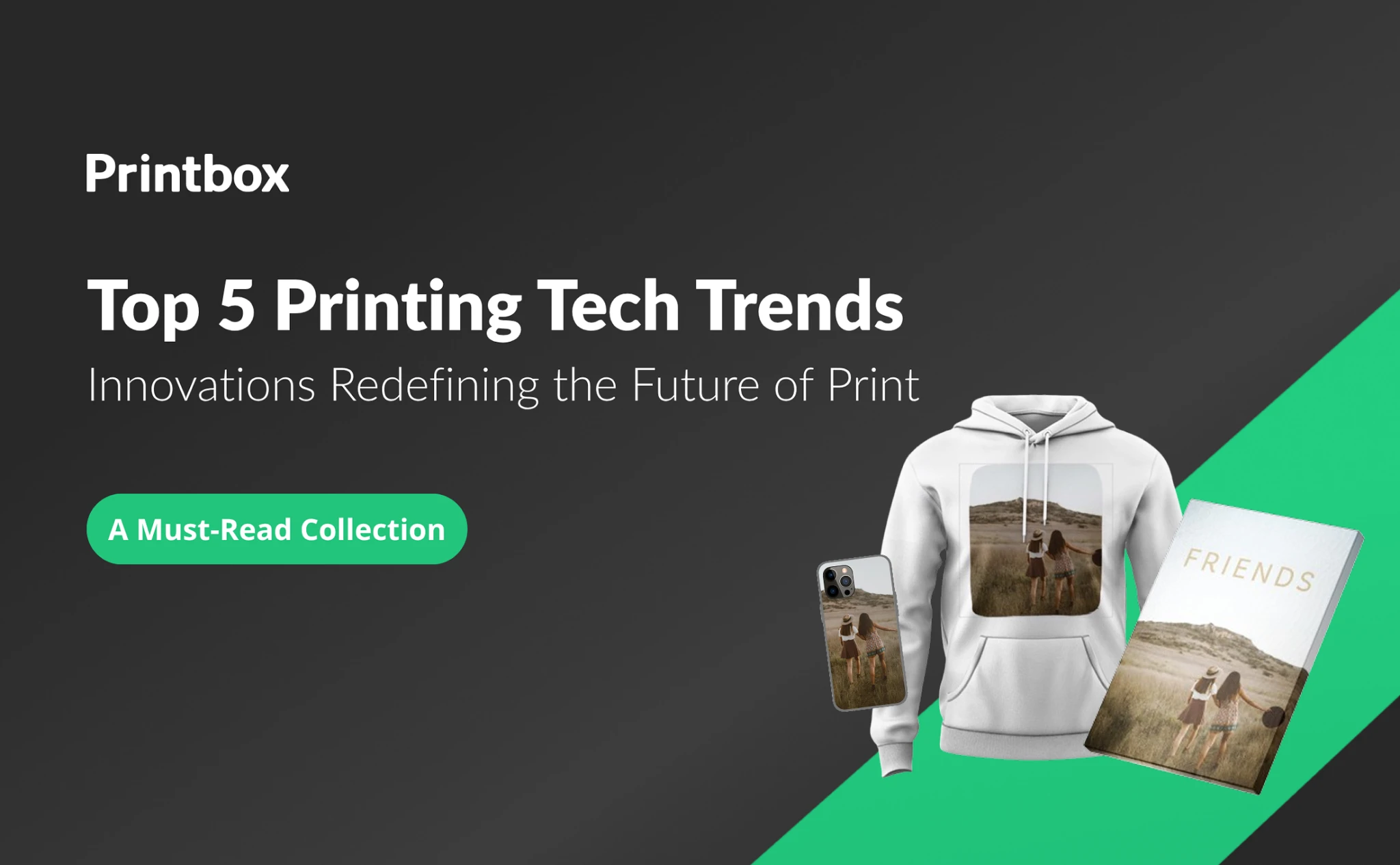Emerging Trends in Printing Technology and Industry: Top 5 Innovations
The printing industry is evolving at an unprecedented pace, driven by advancements in printing technology, sustainability efforts, and changing consumer expectations. In 2025, we’re witnessing groundbreaking innovations in printing technology that are reshaping the landscape of the industry—from eco-conscious methods to AI-driven automation. Staying ahead of these trends is crucial for businesses looking to enhance efficiency, improve product offerings, and maintain a competitive edge. In this article, we explore the top five innovations in printing technology, defining the future of the industry and their impact on businesses worldwide.
Intensive Development of the Printing Industry
The printing industry will experience rapid advancements in 2025, driven by technological innovation, evolving consumer demands, and a heightened focus on sustainability. Keeping abreast of printing trends is crucial for businesses aiming to stay competitive. This year, the industry is poised for significant transformations, emphasizing digital integration and eco-friendly practices.

Printing Industry: What Should You Know About?
Every industry changes with technological progress, and the printing industry is no exception. Printing technology continues to evolve, with digital printing gaining prominence due to its efficiency and versatility. Eco-conscious printing methods are becoming increasingly important as consumers and businesses prioritize sustainability. Moreover, a noticeable shift from analog to digital printing is driven by the demand for faster turnaround times and high-quality prints.
If you’d like to explore how these changes can benefit your business, contact us for personalized advice.
Top Innovations in Printing Technology and Industry
1. Eco-Conscious Printing
Environmental sustainability is a significant trend. New printing technology focuses on reducing waste and using eco-friendly materials. Companies are adopting waterless printing, soy-based inks, and recycled paper to minimize environmental impact.

2. 3D Printing
3D printing, also known as additive manufacturing, is revolutionizing the printing industry. It allows for the creation of complex, customized products across various sectors, including healthcare, automotive, and aerospace. The technology offers unprecedented precision and flexibility, enabling on-demand production and reducing the need for extensive inventories.

3D printing and 3D visualization are closely intertwined, as 3D visualization creates detailed digital models that serve as blueprints for 3D printing. This synergy allows designers and manufacturers to visualize and refine their concepts before producing physical prototypes. This leads to more precise and customized outcomes in various industries. If you want to go deeper into 3D product visualization – here you can find more information: 3D product visualization – 10 advantages of creating online catalogs – Printbox Blog (getprintbox.com)
3. Print On Demand
Print on demand (POD) is reshaping the traditional print business model. It allows for printing materials as needed, reducing waste and inventory costs. This model benefits self-publishing authors, small businesses, and e-commerce platforms offering personalized products.
If you are considering POD in your store, choosing the right photo product software is essential for a successful print-on-demand business. It ensures seamless customization, integration with POD services, and scalability to meet customer demands. This connection allows companies to offer high-quality, personalized products efficiently. More about how to Choose the best photo products software for your business | Printbox (getprintbox.com)
4. Web-to-Print
Web-to-print services enhance customer convenience by enabling online ordering and customization of print materials. This technology streamlines the printing process from design to delivery, making it more efficient and user-friendly.
The web-to-print model empowers businesses to offer customers the ability to design and order customized photo products directly through an online platform. Web-to-print technology simplifies the workflow, allowing enterprises to efficiently manage orders, streamline production, and offer a wide range of personalized products, such as photo books and prints.

Adopting a web-to-print approach allows new photo printing businesses to meet customer demands for convenience and customization while minimizing overhead and operational complexities. The following guide is helpful if you want to start a photo printing business.
Photo Printing Business: How To Start [Practical Guide] | Printbox (getprintbox.com)
5. Product Personalization
Personalized printing is a significant trend driven by consumer demand for unique, custom-made products. Businesses use printing technology to offer customized items such as custom apparel, photo books, and branded merchandise. Offering customized experiences is crucial for customer retention, especially in industries like photo printing. By employing personalization strategies, businesses can improve their web-to-print services, enabling customers to create tailored products that resonate on a personal level. This focus on personalization fosters customer loyalty and sets a brand apart in the competitive market.
Personalization as key to customer retention | Printbox (getprintbox.com)

AI and the Future of Printing
PwC reports that over half (53%) of manufacturers in the US plan to increase automation within the next two years, while 43% are investing in digital upskilling for their workforce. AI plays a pivotal role in shaping the future of printing by optimizing operations, enhancing quality control, and enabling predictive maintenance in modern printing technologies. Real-time data analysis enables predictive maintenance, reducing downtime and operational costs. Furthermore, AI-driven personalization enhances customer experience by delivering tailored products efficiently. This promising future of AI in printing technology will inspire optimism in the industry.
More about this topic you can read here:
AI & The Future of Personalized Print On Demand Products | Printbox (getprintbox.com)
AI as a way to grow your print-on-demand business | Printbox (getprintbox.com)
Printing Trends: FAQ
How is print-on-demand revolutionizing the printing industry?
Print-on-demand transforms the industry by allowing businesses to print materials as needed, reducing waste and inventory costs. This model supports sustainability and offers flexibility, making it ideal for small businesses and e-commerce platforms.
How can businesses integrate eco-conscious printing practices?
Businesses can adopt eco-conscious practices using sustainable materials such as recycled paper, waterless printing technologies, and soy-based inks. Implementing these practices reduces environmental impact and meets the growing consumer demand for green products.
What role does AI play in modern printing technology?
AI enhances modern printing technology by automating complex tasks, optimizing operations, and improving quality control. It enables real-time adjustments, predictive maintenance, and personalized printing, thus increasing productivity and reducing costs.
How is digital printing impacting the printing industry trends?
Digital printing is rapidly replacing analog methods, and for good reason. First and foremost, digital printing enables shorter print runs with quick turnaround times, making it ideal for on-demand production. This capability allows businesses to respond swiftly to market demands without needing large inventories, reducing waste and costs.
Moreover, digital printing supports high levels of customization and personalization, aligning with the growing consumer preference for unique, tailored products. Whether it’s personalized marketing materials, custom apparel, or variable data printing, digital technology allows for flexibility and creativity that traditional printing methods cannot match.
Additionally, digital printing is driving sustainability in the industry. The process uses less ink, reduces waste, and is often more energy-efficient than traditional offset printing. This environmental advantage is becoming increasingly important as businesses and consumers prioritize eco-friendly practices.
Finally, integrating digital printing with advanced technologies like AI and 3D printing further amplifies its impact. AI optimizes workflows, improves quality control, and facilitates predictive maintenance, while 3D printing expands the possibilities for producing complex, customized products.
By staying informed about these trends and innovations, businesses can take control of their future. They can leverage the latest advancements in printing technology to enhance their offerings and maintain a competitive edge. For more insights and solutions aligned with these trends, explore our blog and discover how technologies can benefit your business.




